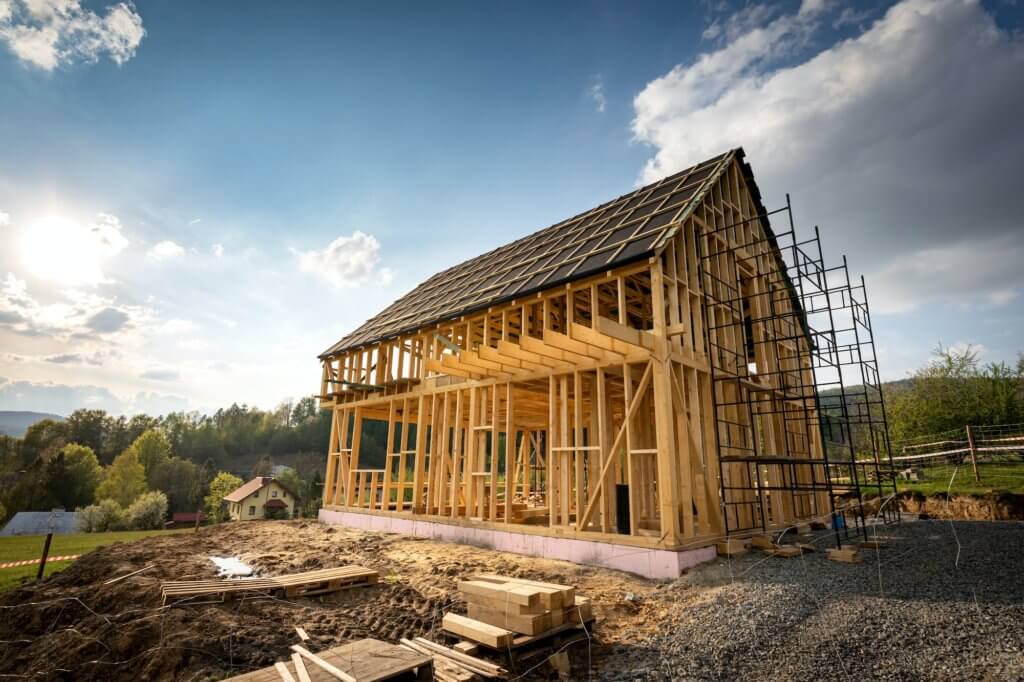Building a new home or commercial space is a thrilling adventure, filled with choices that reflect your style and vision. But amidst the excitement, many overlook a key aspect: pest control for new construction. Imagine uninvited guests crashing your new space party!
This essential process not only helps protect your investment but also promotes a healthy living environment. Ready to discover how pest control can safeguard your dream build? Join us as we explore the ins and outs of keeping your new space pest-free and enjoyable!
Why Pest Control Matters in New Construction
You might think that pests only invade old, worn-down buildings, but that’s not true. New construction can be just as vulnerable-if not more so-to pest infestations. The main reason?
New buildings provide a clean slate for pests, with plenty of places to hide, build nests, and multiply. Without proper pest control measures in place from the start, you could be setting yourself up for problems later on.
Avoiding Structural Damage
One of the biggest threats that pests pose to new construction is structural damage. Termites, for example, are notorious for their ability to chew through wood, causing serious damage to the very bones of your building. And it’s not just termites; rodents can gnaw through wiring and insulation, while carpenter ants can hollow out wood, weakening your structure from the inside out.
Preventing this kind of damage is much easier-and cheaper-than fixing it later. By implementing pest control measures during construction, you can protect your investment and ensure your new building remains safe and sound.
Maintaining a Healthy Environment
Pests aren’t just a nuisance; they can also pose health risks. Rodents, cockroaches, and other pests can carry diseases, contaminate food, and trigger allergies. In a new home or commercial space, the last thing you want is to expose your family, employees, or customers to these health hazards.
By incorporating pest control into your construction plans, you can create a healthier environment from day one. This not only protects the people who will live or work in the building but also helps maintain the overall cleanliness and hygiene of the space.
Saving Money in the Long Run
It’s easy to see pest control as an added expense, especially during the construction phase when costs can already be high. However, investing in pest control now can save you a significant amount of money in the future. Repairing damage caused by pests can be incredibly expensive, and dealing with an infestation once it’s established is often more costly than prevention.
Think of pest control for new construction as an investment in the longevity and value of your property. A little upfront cost can prevent major expenses and headaches down the road.
Key Pest Control Measures for New Construction
So, what does pest control for new construction involve? Here are some of the most effective strategies to consider:
Pre-Construction Soil Treatment
One of the most common and effective pest control measures for new construction is soil treatment, particularly against termites. Termites live underground and enter buildings through the soil, so treating the soil before construction begins is crucial.
Soil treatment involves applying a termiticide to the soil, creating a barrier that termites can’t cross. This is often referred to as “termite pretreatment.” It’s a highly effective way to prevent termites from ever reaching your building in the first place.
Installing Physical Barriers
Another effective pest control measure is the installation of physical barriers. These barriers are designed to keep pests out by blocking their entry points.
For example, stainless steel mesh can be used to block termites, while rodent-proofing involves sealing any gaps or openings that rodents could use to enter the building. Physical barriers are a great addition to chemical treatments, providing an extra layer of protection against pests.
Using Pest-Resistant Building Materials
When choosing materials for your new construction, consider opting for pest-resistant options. For example, treated wood is less attractive to termites, while metal and concrete are naturally resistant to many types of pests.
Using pest-resistant materials is a simple yet effective way to reduce the risk of infestations. It’s especially important in areas prone to specific pests, such as termites or carpenter ants.
Proper Drainage and Moisture Control
Pests thrive in moist environments, so controlling moisture is key to preventing infestations. During construction, make sure that the site is properly graded to prevent water from pooling around the foundation. Installing proper drainage systems, such as gutters and downspouts, can also help keep moisture at bay.
Inside the building, it’s important to ensure that plumbing is properly installed and that there are no leaks. Ventilation in areas like the attic and crawl spaces can also help reduce humidity, making the environment less attractive to pests.
Regular Inspections and Monitoring
Even with the best pest control measures in place, it’s important to stay vigilant. Regular inspections during and after construction can help catch any potential pest issues before they become serious.
Consider working with a pest control professional who can monitor the site and provide ongoing treatments as needed. This proactive approach can help ensure that your new building remains pest-free long after construction is complete.
Common Pests to Watch Out for in New Construction
Understanding which pests are most likely to target your new construction can help you take the right preventative measures. Here are some of the most common pests to watch out for:
Termites
Termites are perhaps the biggest threat to new construction. These wood-eating insects can cause extensive damage to your building if not properly controlled. As mentioned earlier, termite pretreatment is essential to keep these pests at bay.
Rodents
Rodents like rats and mice are always on the lookout for new places to nest. They can chew through almost anything, including electrical wires, insulation, and even concrete. Once inside, they can multiply quickly and cause significant damage.
Ants
While ants may seem like a minor nuisance, certain species, like carpenter ants, can cause serious damage to wooden structures. They hollow out wood to build their nests, which can weaken the integrity of your building. You will need professional ant control services to make sure that these are dealt with efficiently without the worry of them coming back.
Cockroaches
Cockroaches are known for their ability to survive almost anything, and once they get into a building, they can be incredibly difficult to eliminate. They carry diseases and can trigger allergies, making them a major health concern.
Spiders
While most spiders are harmless, some, like the black widow or brown recluse, can pose a danger to humans. Spiders often enter buildings in search of food or shelter, and without proper pest control, they can become a problem.
Working with a Professional Pest Control Company
When it comes to pest control for new construction, it’s a good idea to work with a professional pest control company. They have the expertise and tools needed to effectively prevent and manage pest issues.
Choosing the Right Company
Not all pest control companies are created equal, so it’s important to choose one with experience in new construction. Look for a company that offers a comprehensive range of services, including pre-construction treatments, physical barriers, and ongoing monitoring.
Ask for references and check reviews to ensure the company has a good reputation. It’s also a good idea to get quotes from multiple companies to ensure you’re getting a fair price.
What to Expect
When you hire a pest control company, they will typically start with an inspection of the construction site. Based on their findings, they will recommend a treatment plan tailored to your specific needs.
This might include soil treatments, the installation of physical barriers, and recommendations for pest-resistant materials. They will also provide ongoing monitoring and follow-up treatments as needed to ensure your building stays pest-free.
Maintaining a Pest-Free Building After Construction
Once your new building is complete, the work doesn’t stop there. Maintaining a pest-free environment requires ongoing effort. Here are some tips to keep pests at bay after construction:
Regular Inspections
Continue to have regular inspections by a pest control professional. They can catch any early signs of infestation and address them before they become a bigger problem.
Keep the Area Clean
Pests are attracted to food, water, and shelter, so keeping your building clean is one of the best ways to prevent infestations. Make sure to clean up spills immediately, store food in sealed containers, and take out the trash regularly.
Seal Entry Points
Regularly inspect your building for any gaps or cracks that pests could use to enter. Seal these entry points to keep pests out.
Proper Landscaping
The area around your building can also attract pests. Keep landscaping neat and trim, and avoid planting shrubs or trees too close to the building, as these can provide a bridge for pests to enter.
Manage Moisture
As mentioned earlier, controlling moisture is key to preventing pests. Make sure your building has proper drainage and that any leaks or standing water are addressed immediately.
Also Read: The Essential Guide to Construction Estimating Services in California
The Vital Role of Pest Control for New Construction
In conclusion, pest control for new construction is essential for safeguarding your investment, preserving structural integrity, and ensuring a healthy environment. By integrating effective pest control measures during the building process, you not only prevent potential infestations but also enhance the longevity and value of your property.
Remember that maintaining a pest-free space requires ongoing attention and care. Prioritizing pest control from the onset will provide peace of mind and protect your new construction for years to come.
Want to learn more? Don’t forget to explore our other articles before you leave!


